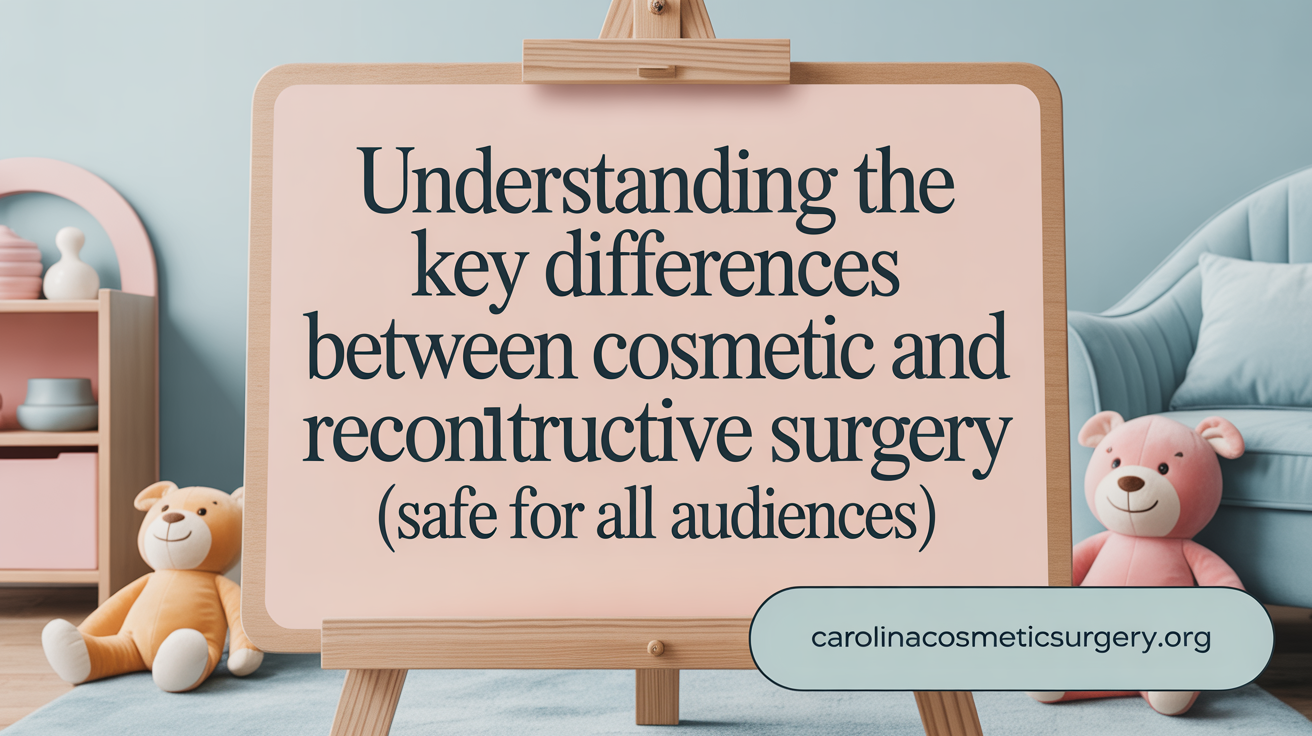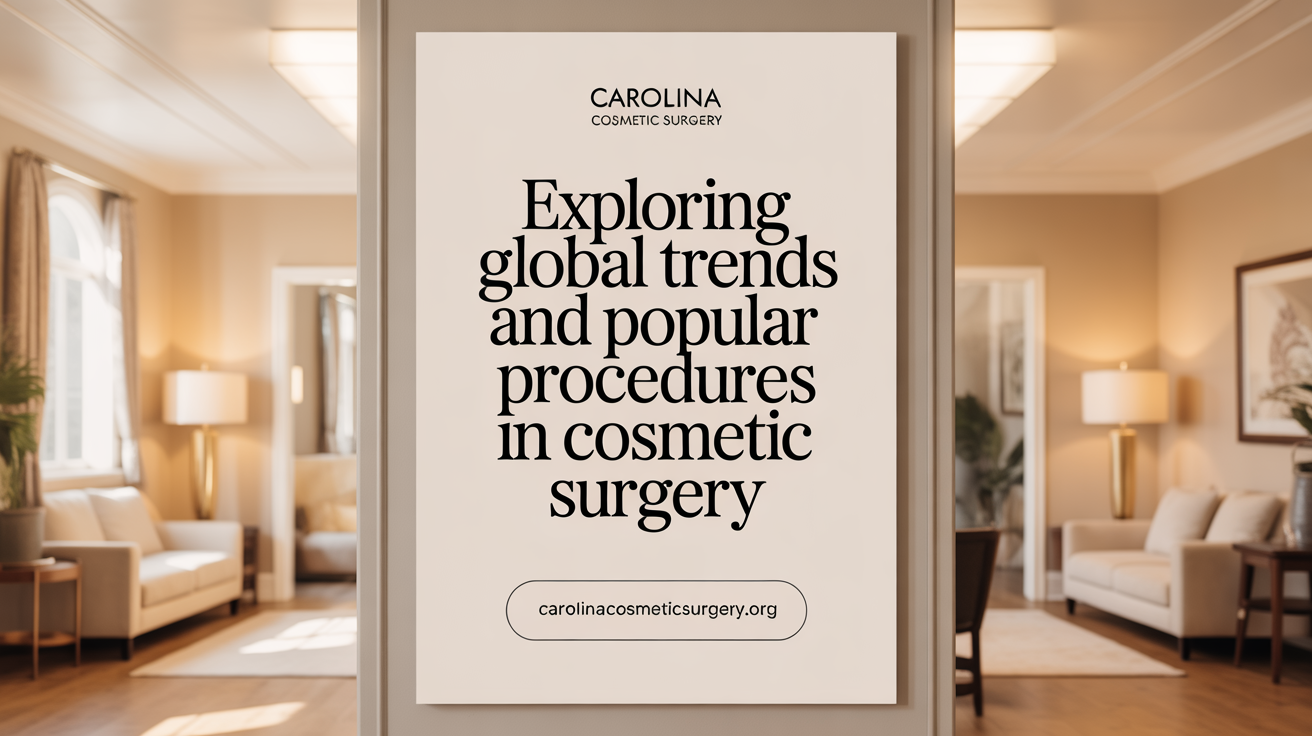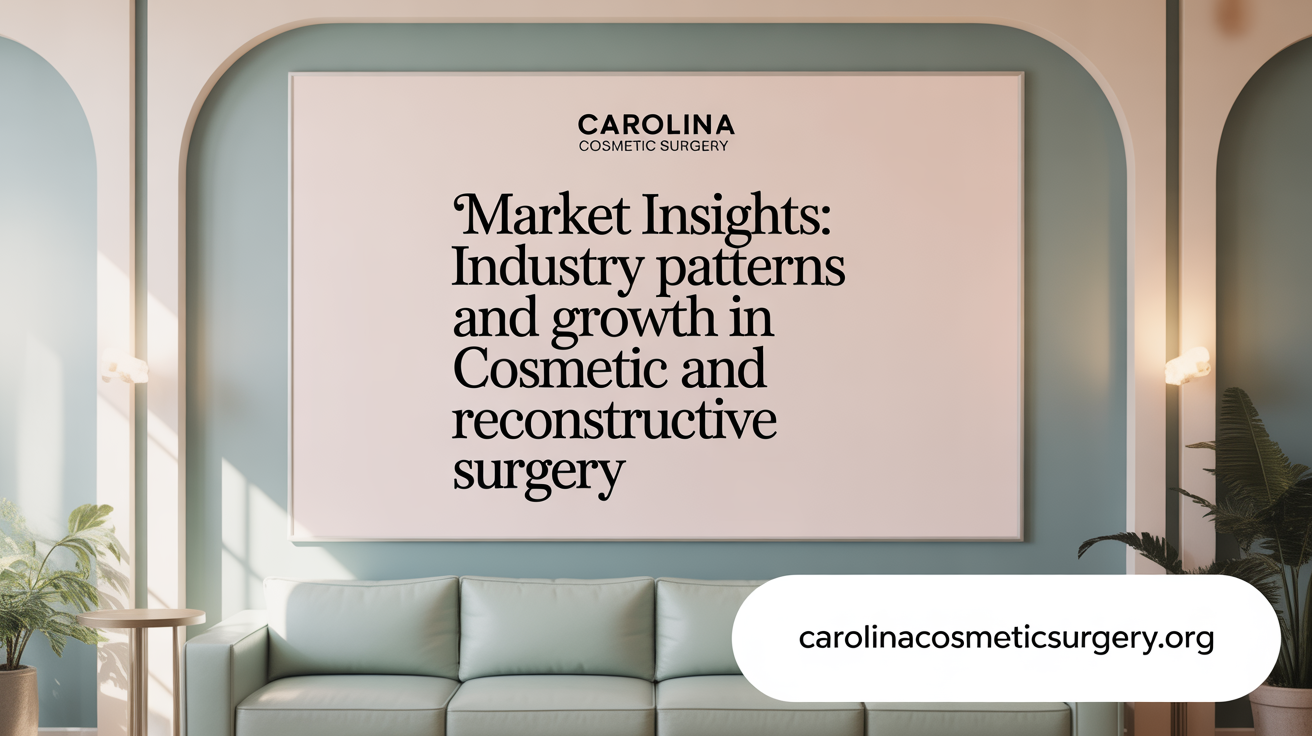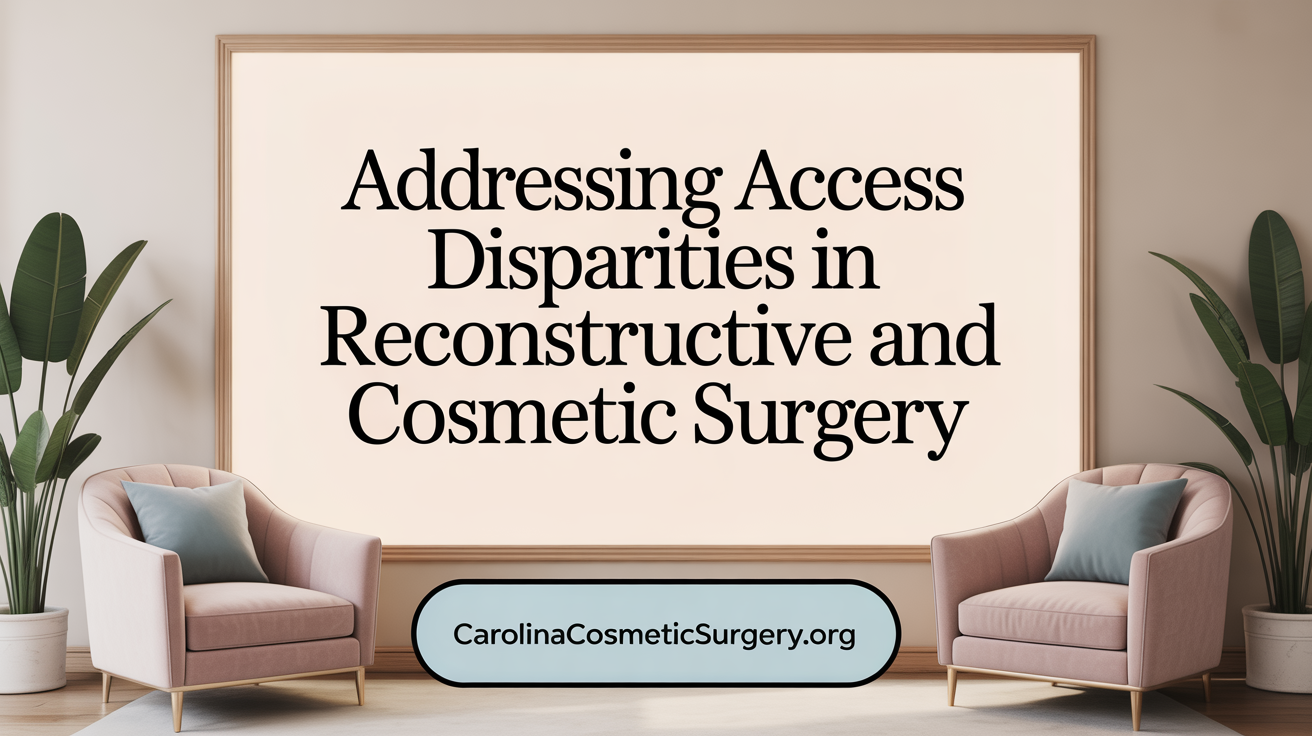Understanding the Divide Between Reconstructive and Cosmetic Surgery
Plastic surgery encompasses two distinct branches: cosmetic surgery, focused on enhancing appearance, and reconstructive surgery, aimed at restoring form and function due to medical necessity. With rising global procedure volumes and evolving societal attitudes, it is crucial to analyze the statistical differences in demand, accessibility, and demographic influences for these two categories. This article delves into recent data and trends to highlight how demand patterns diverge, the disparities in access, and what factors shape their market dynamics across regions and populations.
Defining Cosmetic and Reconstructive Surgery: Purpose and Procedure Differences

What is the difference between cosmetic surgery and reconstructive surgery?
Cosmetic surgery is primarily aimed at improving aesthetic appearance based on personal preferences. It involves elective procedures that enhance features or correct perceived flaws, boosting confidence and self-image. Popular cosmetic procedures include facelifts, liposuction, and breast augmentation.
Reconstructive surgery, in contrast, is focused on restoring function and appearance following illness, injury, or congenital defects. Its goal is to repair damage, improve mobility, and achieve normalcy. Common reconstructive procedures are cleft palate repair, burn rehabilitation, and breast reconstruction post-mastectomy.
While both types of surgery involve modifying the body, their fundamental purpose separates them. Cosmetic surgeries are elective and driven by aesthetic desires, often influenced by cultural and societal trends. Reconstructive surgeries address medical needs, often critical for health and well-being.
Examples of common procedures in each category
| Type of Surgery | Common Procedures | Purpose/Notes |
|---|---|---|
| Cosmetic | Facelifts, Liposuction, Breast Augmentation, Rhinoplasty | Elective, aesthetic enhancement, boosting confidence |
| Reconstructive | Cleft Lip/Palate Repair, Burn Treatment, Breast Reconstruction, Tumor Removal | Restoring function and normal appearance post-illness or injury |
Impact of purpose on demand and perception
The reasons behind undergoing a procedure significantly influence public perception and demand. Cosmetic surgeries are seen as personal lifestyle choices, often driven by trends, self-esteem, or societal standards. They are also considered luxury services influenced by economic conditions and cultural acceptance.
Reconstructive surgeries are usually viewed as necessary medical treatments, associated with recovery, healing, and restoring quality of life. They tend to garner public and insurance support due to their restorative purpose.
Understanding these differences helps clarify why certain procedures are more prevalent and how societal attitudes shape the industry's perception and accessibility.
Global and Regional Trends in Plastic Surgery: Volume, Growth, and Popular Procedures

What are the global statistics and trends concerning plastic surgery?
In 2023, the worldwide volume of aesthetic procedures reached approximately 34.9 million, marking a modest increase of 3.4% from the previous year. This growth reflects a sustained interest in both surgical and non-surgical treatments. Surgical procedures accounted for over 15.8 million cases, representing a 5.5% rise, with liposuction leading as the most performed surgical method—over 2.2 million procedures.
On the non-surgical front, more than 19 million treatments were conducted globally, driven by popular options like botulinum toxin injections, which alone totaled over 8.8 million cases. This surge highlights a strong patient preference for less invasive options that offer quicker recovery and natural-looking results.
Regionally, the United States performed the highest number of procedures, with more than 6.1 million carried out, followed by Brazil with approximately 3.3 million, and Germany. These countries continue to dominate in procedural volume, influenced by technological adoption and societal acceptance. Popular head and face treatments, including eyelid surgery and rhinoplasty, saw nearly 20% growth, underscoring their rising demand.
The overall trend points toward increasing popularity of minimally invasive treatments and expanding interest among diverse age groups and genders. Technological advances, social media influence, and shifting beauty standards contribute to these evolving patterns. The growing range of procedures also indicates a more inclusive approach, reaching broader demographic segments across the globe.
Market Dynamics and Industry Patterns in Cosmetic vs. Reconstructive Surgery

What is the market trend for cosmetic surgery?
The global landscape of cosmetic surgery is experiencing steady growth, driven by technological innovations, evolving consumer preferences, and expanding demographics. In 2023, approximately 34.9 million plastic procedures were performed worldwide, reflecting a 3.4% increase from previous years. The industry’s value is projected to rise dramatically from about $67.3 billion in 2021 to an estimated $201 billion by 2031.
Regions like North America—particularly the United States—dominate the market, with over 6.1 million procedures in 2023. This region benefits from advanced healthcare infrastructure and a high rate of medical tourism. Meanwhile, Asia-Pacific, with South Korea at the forefront, is emerging as a rapidly growing hub due to increased awareness and technological adoption.
Consumer interest is shifting toward minimally invasive treatments, which make up a significant portion of the increase. Procedures such as Botox, dermal fillers, and other neurotoxin injections saw an increase of 9% to approximately 9.48 million treatments globally in 2023. This trend highlights the preference for subtle, quicker results with less recovery time.
Overall, the market trend underscores a move toward less invasive options, technological innovation, and targeting broader demographic groups—including younger individuals and men—across various regions.
What are the industry patterns, market distribution, and performance indicators for reconstructive versus cosmetic surgery?
In industry terms, cosmetic procedures like liposuction, breast augmentation, and eyelid surgeries form the core of market volume and revenue. In 2023, liposuction remained the most common surgical operation, with over 2.2 million procedures globally. Non-surgical treatments, including neuromodulators and dermal fillers, have seen substantial growth, with dermal fillers increasing by over 365% over recent years.
The market distribution is heavily concentrated in North America—especially the U.S., which accounted for more than 6.1 million procedures—and is expanding in Asia-Pacific regions. Emerging markets such as in Africa and parts of Latin America show potential with unmet demand, although access disparities remain significant.
Performance indicators reveal a strong link between economic health and aesthetic procedure demand. Studies demonstrate a positive correlation between economic factors like GDP, stock indices, and the number of procedures performed. During economic downturns like the Great Recession or COVID-19 pandemic, demand for less costly, non-invasive procedures such as fillers and Botox remained resilient.
While cosmetic procedures dominate in volume and revenue, reconstructive surgeries—targeting conditions like cancer, trauma, and congenital defects—play an essential but smaller role. The demand for reconstructive surgery often depends on healthcare infrastructure and medical needs driven by aging populations or injury prevention. Both sectors continue to grow, but cosmetic surgery’s rapid expansion is primarily fueled by technological advances, increased social acceptance, and demographic shifts.
| Aspect | Cosmetic Surgery | Reconstructive Surgery | Notes |
|---|---|---|---|
| Major Procedures | Liposuction, breast augmentation, eyelid surgery | Tumor removal, burn repair, cleft repairs | Volume and revenue dominant in cosmetic |
| Market Distribution | North America, Asia-Pacific, Europe | Predominantly in developed nations but critical globally | Cosmetic focused on aesthetics, reconstructive on health |
| Economic Sensitivity | Highly sensitive, correlates with GDP, stock indices | Less sensitive, driven by medical necessity | Both sectors benefit from technological advancements |
| Growth Trends | Steady increase in minimally invasive and surgical options | Stable, driven by need and healthcare access | Overall industry expanding, with cosmetic growing faster |
Access Disparities in Reconstructive and Cosmetic Surgery: Socioeconomic and Geographic Factors

What are the disparities in access and availability between reconstructive and cosmetic surgery?
Disparities in access and availability between reconstructive and cosmetic procedures are shaped by various socioeconomic, racial, and geographic factors. Reconstructive surgery, which restores form and function following injuries or medical conditions, often serves underserved populations. These groups include residents of rural or low-income areas where there are fewer specialized surgeons, inadequate healthcare infrastructure, and limited resources. For example, in regions like sub-Saharan Africa or South Asia, over 95% of the population lacks access to affordable surgical care, illustrating the vast gap.
In contrast, cosmetic surgery typically takes place in urban centers and more affluent communities. These procedures are often elective and paid out-of-pocket, making them more accessible in areas with higher average incomes and better healthcare facilities. Urban hotspots like Los Angeles, New York, and Miami have a high concentration of cosmetic surgeons, resulting in a geographic imbalance.
Racial and ethnic disparities also influence demand and access. Minority groups may have reduced access due to systemic barriers, including fewer providers from diverse backgrounds, higher economic barriers, and lower insurance coverage rates. For instance, studies show that Black and Hispanic populations spend less on cosmetic procedures and are underrepresented among providers, which impacts service availability and access.
Efforts are underway worldwide to address the shortages of reconstructive surgeons, especially in low- and middle-income countries (LMICs). International collaborations, non-governmental organizations, and capacity-building initiatives aim to increase the number of trained surgeons, improve infrastructure, and make surgeries more accessible. Innovative solutions like telemedicine are also being adopted to expand reach and provide care in remote areas.
Overall, overcoming these disparities involves targeted strategies such as expanding training programs, improving healthcare infrastructure, increasing diversity among practitioners, and leveraging technology. Addressing socioeconomic and geographic barriers is crucial to ensure equitable access to both reconstructive and cosmetic surgeries for all populations.
Demographic and Societal Influences on Demand for Cosmetic and Reconstructive Procedures
Which demographic and societal factors influence the demand for reconstructive and cosmetic surgeries?
Demand for both reconstructive and cosmetic surgeries is shaped by a variety of demographic and societal influences. Gender remains a dominant factor, with women making up roughly 86-90% of all cosmetic surgery patients in many regions, reflecting higher societal acceptance, awareness, and acceptance of aesthetic procedures among women.
Age demographics are shifting too. While traditionally associated with older populations, there is a rising trend of younger individuals, particularly those in their twenties and thirties, opting for procedures such as facelifts, rhinoplasty, and minimally invasive treatments like neurotoxins and fillers. Notably, the average age of facelift patients is getting younger, and procedures like rhinoplasty are most popular among under-34s.
Racial and ethnic backgrounds also significantly influence procedure choices and access. Historically, White or Asian populations have represented the majority of cosmetic surgery patients in the U.S., but there is notable growth among minority groups such as African Americans, Hispanics, and Asians. Disparities exist in expenditures on cosmetic procedures, with minority groups spending less, potentially due to microeconomic factors and access issues.
Cultural and societal factors, including media and social pressures, heavily impact perceptions of beauty and individual motivation to undergo procedures. Social media, celebrity influences, and societal standards promote certain aesthetic ideals, often contributing to an increased desire for youthful, natural-looking results.
Furthermore, societal attitudes towards cosmetic surgery are evolving. There is a growing acceptance of earlier maintenance and preventative treatments, with procedures being increasingly viewed as part of health and wellness rather than merely vanity. Public perceptions differ between reconstructive and cosmetic contexts; reconstructive cues tend to garner more positive support and are more often insured, emphasizing their role in restoring function and appearance.
Influences from cultural expectations, coupled with personal and partner influences, also play critical roles. For example, approval from significant others and societal trends can motivate individuals toward aesthetic enhancements. In summary, demographic factors such as gender, age, race, and cultural background, combined with societal influences like media, social pressures, and cultural norms, collectively shape the patterns and desires for reconstructive and cosmetic procedures across different populations.
Public Perception and Historical Context: Shaping Attitudes Toward Surgery Types
How do public perception and societal attitudes differ toward reconstructive and cosmetic surgeries?
Public perception of plastic surgery is largely shaped by media portrayals that focus on aesthetic enhancement and beauty ideals. As a result, many people view plastic surgery primarily as a way to improve appearance, with high demand for procedures like liposuction, breast augmentation, and facelifts. These procedures tend to be seen as elective and primarily vanity-driven, which influences societal attitudes.
However, there is less public awareness about the essential role of reconstructive surgeries. These include operations for tumor removal, traumatic injuries, burn treatment, and congenital conditions like cleft lip and palate. Studies show that reconstructive procedures are often viewed as less glamorous and are sometimes undervalued compared to cosmetic surgeries. This societal undervaluation stems partly from a lack of understanding of the medical necessity and life-changing impact of reconstructive work.
Media emphasis on beauty and youth perpetuates a superficial view of plastic surgery, overshadowing its critical medical functions. Public support is also skewed, with research indicating that reconstructive procedures are more favorably viewed when associated with health and wellness.
Despite this, recent data highlight a shifting trend: more awareness and education initiatives are improving understanding, and there is growing recognition of reconstructive surgery’s vital medical importance. Nonetheless, societal attitudes still tend to prioritize cosmetic enhancement over reconstructive and restorative procedures, which are often perceived as less glamorous but are crucial for restoring function and quality of life.
Overall, societal perceptions remain divided, with a tendency to undervalue the medical necessity of reconstructive surgery amidst the glamorized image of cosmetic enhancement. Increasing education and exposure are essential to balance public understanding of the full spectrum of plastic surgery.
Bridging the Divide: Toward Equitable Access and Informed Understanding
The contrasting landscapes of reconstructive and cosmetic surgery reflect profound differences in demand, accessibility, and societal recognition. Cosmetic surgery continues to flourish globally, propelled by innovation, economic factors, and evolving beauty ideals, while reconstructive surgery remains essential yet less accessible, especially in underserved regions. Addressing disparities in access requires concerted efforts including expanding specialist training, improving healthcare infrastructure, and fostering public understanding of reconstructive surgery’s critical role. Simultaneously, shifting societal attitudes to appreciate the functional and medical importance of plastic surgery beyond aesthetic enhancement can enhance support for reconstructive care. Together, these advances promise a future where both cosmetic and reconstructive procedures are better integrated, more accessible, and recognized for their distinct yet complementary contributions to health and quality of life.
References
- [PDF] 2024 Plastic Surgery Statistics Report
- Plastic Surgery Sees Steady Growth Amidst Economic Uncertainty ...
- Global Survey 2023: Full Report and Press Releases - ISAPS
- A 16-Year Analysis of Aesthetic Surgery Volume and Its Association ...
- Patient demand for plastic surgeons for every US state based on ...
- 2021 Statistics & Trends Released - Demand for Facial Plastic ...
- Plastic and Reconstructive Surgery – Global Open - LWW
